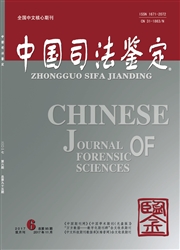

 中文摘要:
中文摘要:
细察证据科学的国际发展状况,统计数字和统计理念似有大幅度席卷证据领域之势。然而,当前的众多法律工作者似乎尚未做好应对大数据时代洪流之势的准备。且不说形式多样的证据类型让其应接不暇,单是接受带有统计理念的的新型证据已让其望而却步。我们并不奢望每一个法律工作者都如同专业技术人员一样,横扫多门类自然科学知识,深入掌握科学证据的理论细节;但是,贯穿于多种科学证据形式之间的通用证据理念与证据适用方法着实值得司法实践者去深入了解,统计学方法便是其中之一。潜藏于证据信息凝练过程中的多元统计分析,适用于证据评价过程中的似然率,以及根植于证据解释过程中的贝叶斯原理……这些看似遥远的统计学问题都已悄然降临至与法律实务相关科学证据报告之中,成为法律工作者必须跨越的阅读门槛。
 英文摘要:
英文摘要:
As a result of global scientific evidence development, statistical data and statistical idea have been planted into different kinds of evidence domain. However, law practitioners are seemingly not well prepared to answer the call of era of big data. They have been driven into a difficult situation by various kinds of scientific evidence. They are too exhausted to face the statistical part of modem evidence. We surely cannot feed the law practitioners with complicated natural science theories, or force them to deeply understand the technical part of scientific evidence. What we can do is to summarize the basic scientific evidence philosophy as well as the general scientific evidence application methods, which will be really helpful for the law practitioners. Generally speaking, multivariate statistical analysis plays an important role in exploring evidence information; likelihood ratio is the key method for evidence evaluation; Bayes' theorem is the main entrance to evidence interpretation. These three categories of statistical methods have gotten ready for the near future of evidence science. All the law practitioners should be equipped with these evidence-related statistical ideas.
 同期刊论文项目
同期刊论文项目
 同项目期刊论文
同项目期刊论文
 期刊信息
期刊信息
